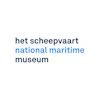
21. Oost 1, Maps & Marvels: Crystal glassware
In this room we can see some splendid examples of eighteenth-century engraved glassware, made for special occasions. All these glasses have a maritime connection. In the Republic at that time, there was an extensive tradition of drinking games and toasting, not only on private occasions such as betrothals and marriages but also during business meetings and on official occasions such as a ship setting sail. Generally, it would be the host who expressed the good wishes found engraved on the glassware: to the health of those present, to the prosperity of the city, or to a safe voyage. Dozens of different toasts would sometimes be made. These glasses mostly depict ships and the names of their captains. Two different techniques were used for engraving: engraving with a diamond and engraving with the use of a grinding wheel. In diamond engraving, the picture is scratched onto the surface using a diamond-tipped stylus, which produces lines and cross-hatching. In wheel engraving, a rotating wheel covered with diamond dust at the edges is used to grind away thin layers of the glass. This creates a wonderful interplay of different depths and of matt and polished areas.


The National Maritime Museum
Het Scheepvaartmuseum (The National Maritime Museum) shows the strong connection between the maritime world and society as a whole, and more specifically the impact of this on the lives of many individuals. The collection of The National Maritime Museum is one of the largest and most notable maritime collections in the world with approximately 400,000 objects, including paintings, models of ships, navigation instruments, and maps of the world. Discover 500 years of Dutch Maritime history as well as its strong links to today’s society and the society of the future.
- Kattenburgerplein 1
- Amsterdam Netherlands
- (020) 52 32 222
- www.hetscheepvaartmuseum.nl
